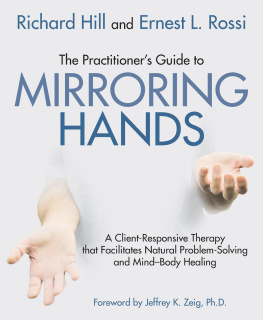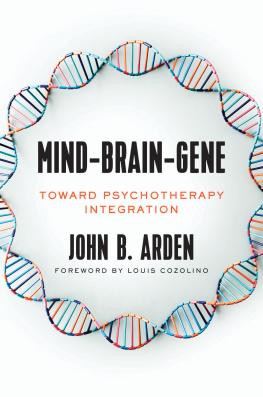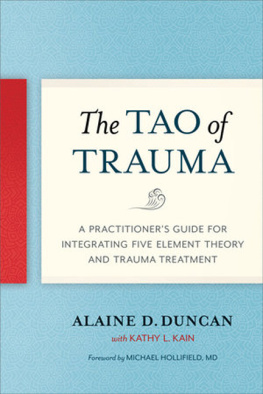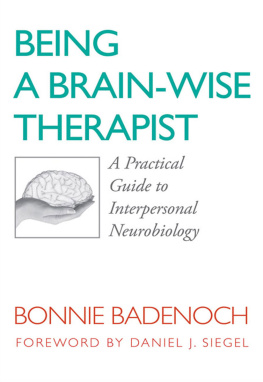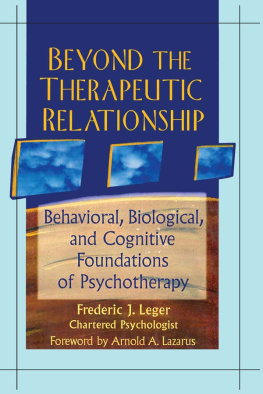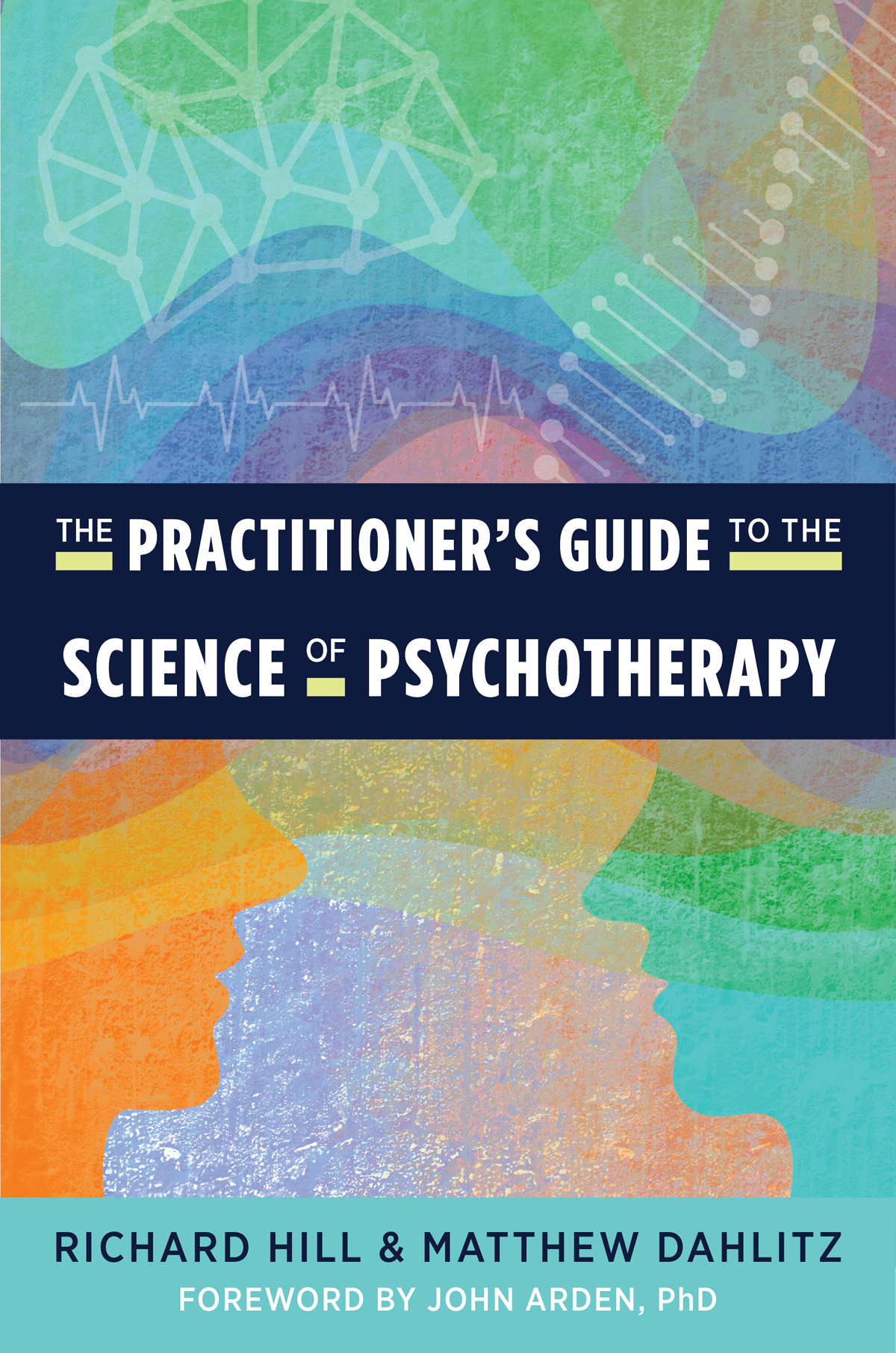Contents
Guide
Page List
THE PRACTITIONERS GUIDE TO THE
SCIENCE OF PSYCHOTHERAPY
RICHARD HILL AND MATTHEW DAHLITZ
FOREWORD BY JOHN ARDEN

A NORTON PROFESSIONAL BOOK
To Ernest Rossi (19332020), who gave me
the joy and pleasure of mentorship
and transformed the rigors of study
into an adventure of possibility.
Richard
To my beautiful wife Shera.
Your support and encouragement
make impossible days possible
and brilliant ones even brighter!
Matthew
Contents
Reading this book can be as straightforward as beginning at and working your way to the end. There are, however, several ways to navigate these pages. Imagine that the entire book is a whole human being and through the contents page you can find specific areas and aspects of that person. This differentiation of the whole person is not meant to imply that a person can be divided and treated as isolated parts. Quite the contrary: That the person must be looked at as a whole is the central argument of the book. Humans are collections of many elements that can be affected in many ways. Learning about the elements is meant to foster a better understanding of the whole.
Most sections contain a special Clinical Notes box. We appreciate that information without practical application can lose meaning and lose interest, so we hope that these boxes add clarity, as well as insight into what can be created with the information in the main body of the text. We also encourage you to make your own clinical notes that you can slide between the pages as you develop your own thoughts and ideas about the text.
Finally, we have written this book as a conduit that might connect us to you the reader both abstractly, through the words on the page, and also literally, by stimulating conversations at conferences, or associated with our online podcasts and other programs, or on social media. Even more valuable is the possibility that you might share what is in your mind with us through your own words. Please visit with us at The Science of Psychotherapy website, and let us see what we can create.
Einstein noted that science without religion is lame and religion without science is blind (Knowles, 1999, p. 290). We can twist that analogy to psychotherapy without science can be a presumptuous ritual with questionable benefit. Theory without sufficient backing of research to demonstrate its efficiency can be countertherapeutic. Yet despite these concerns, the 20th century saw the rise and fall of more than 100 types of different psychotherapies. Almost like mini-religions and cults with esoteric terminologies, they are often based entirely on concepts that make sense only within the context of the particular theory. They become walled-off silos with an infrastructure of presumed competency and proficiency, defined by the jargon of their theoretical schools. Many of these psychotherapies have achieved so much popularity that they are known simply by their initials. They have built economic franchises with their own publications, dues for membership, certifications, and conferences where devotees give esoteric lectures understood only by those with higher levels of acculturation within those schools. Many are led by a guru, a person with a branded name. A noted cognitive behavioral psychologist joked that one of the largest psychotherapy conferences in the world was not really about the evolution in the field, but so that you can see them before they die.
The pop-psychotherapy marketplace even infiltrated the graduate schools. One applicant, during her interview for a postdoc position, informed me that, were she selected, her goal for the year would be to find her theoretical home. In response, I suggested that the 21st century necessitates that we find common denominators between the different schools of psychotherapy based on science and discard the extraneous theoretical debris. This comprehensive book does an excellent job of just that. The common denominators explored throughout the following chapters illustrate research that is biopsychosocial in nature. This integrative perspective subsumes the relevant contributions of the past and discards the purely theory-driven cul-de-sacs that are based only on the tight confines of a particular school.
Without a common language backed by research, clients of therapists are put at a disadvantage. Our societies have sanctioned us as experts in mental health, and we attempt to prove our expertise with framed diplomas decorating our offices and letters following our names. Even though therapists are generally well-meaning and compassionate, they are marinated in different theoretical schools. Clients are often confused to hear completely varying perspectives about their problems from two different therapists.
To resolve these problems, the authors of this book have for many years offered a website entitled The Science of Psychotherapy. There they have provided numerous articles, interviews, and seminars on cutting-edge research in the field. Fortunately, they have followed up those efforts with this book.
In bringing science to psychotherapy, we need to ensure that it is real science and not a mere veneer. Sure, conference attendance numbers and book sales go up when the latest brain terms are used. But we need to be careful to avoid reductionism when talking about specific brain regions, such as the currently in vogue vagus or the ever-popular right hemisphere. Yes, the right hemisphere is important, but only in balance with the left. For example, consistent research has shown that overactivity of the right hemisphere is associated with avoidance and withdrawalaccordingly, anxiety and depression.
The field of psychotherapy had been undergoing a sea change thanks to brain-imaging techniques, as well as advances in the study of immunology, metabolism, and epigenetics developed in the last 2030 years. We can combine these advances with evidenced-based practices and outcome management tools to individually tailor the psychotherapeutic techniques that have been shown to engage particular systems throughout the body. We have learned a lot over the years about how we can calm overactivated areas while increasing activation in areas that need to be boosted. Essentially, we can teach our clients how to tune up their brains. By normalizing psychological disorders and their resolutions, we can explain and delineate road maps for recovery, guiding clients away from the pain that confuses and overwhelms them.
It has long been shown that from birth to death, the quality of our relationships profoundly affects not only how we view the world but also how our brains organize. Psychodynamic theorists were right all along that attachment styles are carried over into the therapy room. And so are the perspectives that reflect our embeddedness within particular socioeconomic and cultural contexts. It is therefore no wonder that psychotherapy research has for decades stressed the importance of the alliance, attunement, transferencewhatever terminology was used. This book astutely reviews that research but goes beyond the wall of the well-established truisms detailed in a plethora of articles.
The sea change in psychotherapy was prophesied long ago. Before he embarked on theory without a brain-based perspective, Sigmund Freud said, We must recollect that all of our provisional ideas in psychology will presumably one day be based on an organic substructure. The father of American psychology, William James, speculated that the act of will activates neural circuits (Arden, 2015, p. viii). Roughly a century later, we have the science to support these prophesies. Nobel laureate Roger Sperry argued that, Mental forces could direct electrochemical traffic between neurons at the cellular level (Schwartz & Begley, p. 42). And now we know that our mental activity can influence our immune system and gene expression, through the work of another Nobel laureate, Eric Kandel, who said, Psychotherapy works by producing changes in gene expression that alter the strength of synaptic connections (Kandel, 1998, p. 460). In other words, causation is multidirectional at all levels, even down to gene expression and metabolism.




